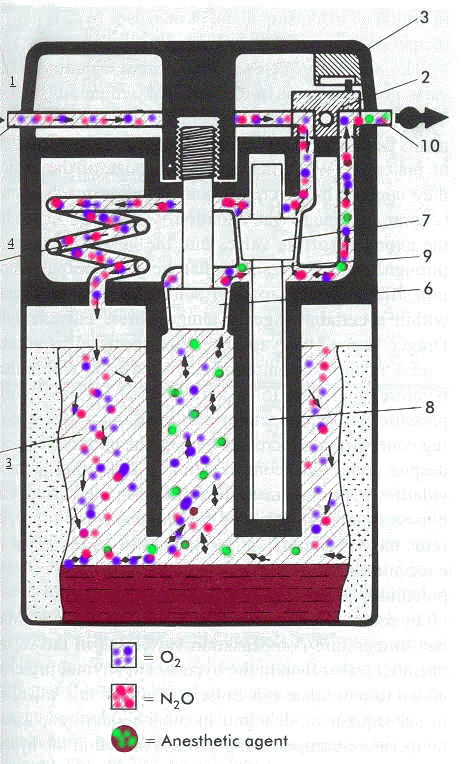- The vaporizer for this inhalation agent includes a heating system to insure production of vapor at pressures in excess of 1 atm
- isoflurane
- desflurane
- nitrous oxide
- sevoflurane
- Thermostatically regulated bypass circuit:

- position 1
- position 3
- position 4
- position 7
- If the amount of gas entering the bypass circuit is 4844 mls and the amount of gas entering the vaporizing chamber is 106 ml and the amount of gas contributed by the volatile agent is 50 mls, the splitting ratio would be:
- 2.12
- 46.6
- 31.05
- cannot be calculated without knowing the desired output concentration
- As the desired percentage anesthetic delivered increases from 1% to 3%, the splitting ratios tend to:
- increase
- decrease
- remain unaffected
- The error in anesthetic concentration emerging from an anesthetic machine (Drager Vapor 19.1, e.g.) and due to temperature effects over the range of + 15 degrees C to + 35 degrees C would be about
- 2%
- 5%
- 10%
- 15%
- 20%
- Considering hypobaric states and effects on possible errors in vol% vs. MAC
- The errors associated with potency would be larger than those associated with vol% values
- Vol% errors will be larger than errors in potency
- There should be no error if one remembers to place the hypobaric pressure value in the ratio of SVP/atmospheric pressure.
- Halothane MAC value
- 46 mm Hg
- 12.8 mm Hg
- 5.7 mm Hg
- 16 mm Hg
- Higher boiling point:
- isoflurane
- sevoflurane
- Mapleson system with best efficiency with respect to limiting rebreathing:
- A
- B
- C
- D
- E